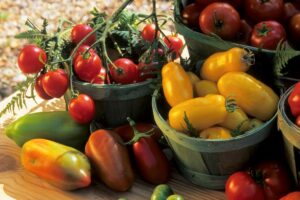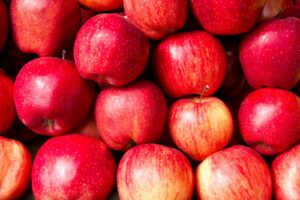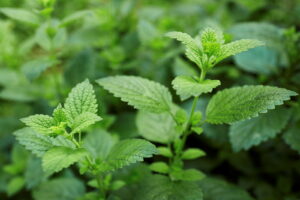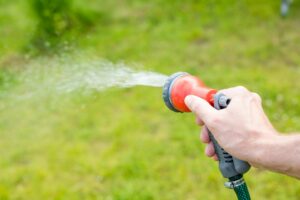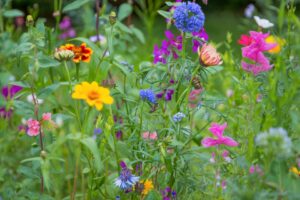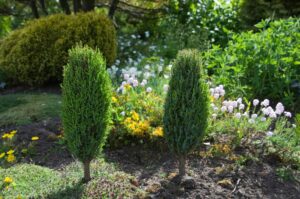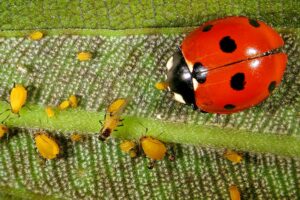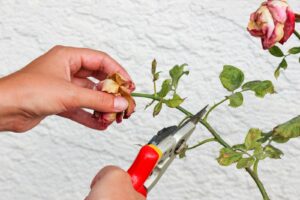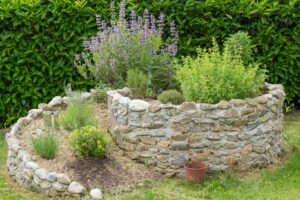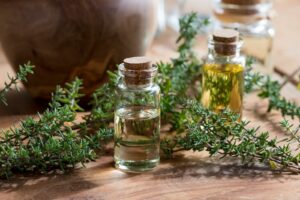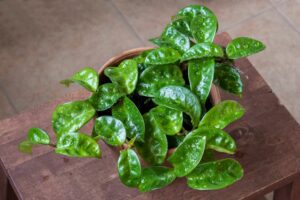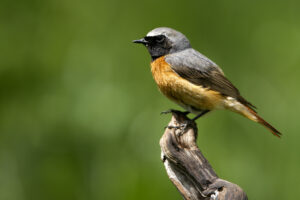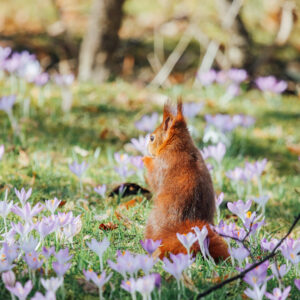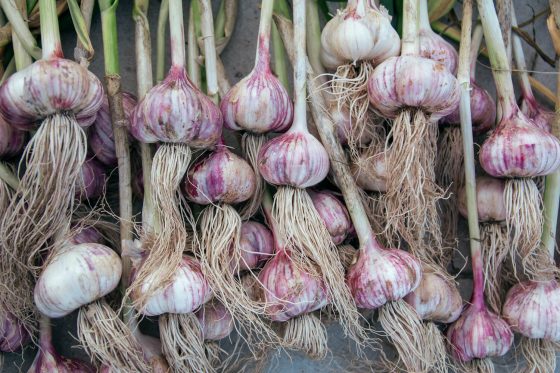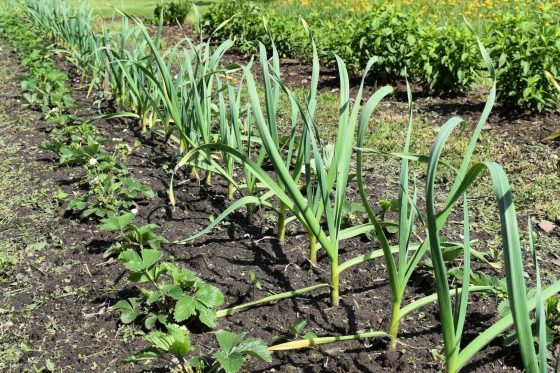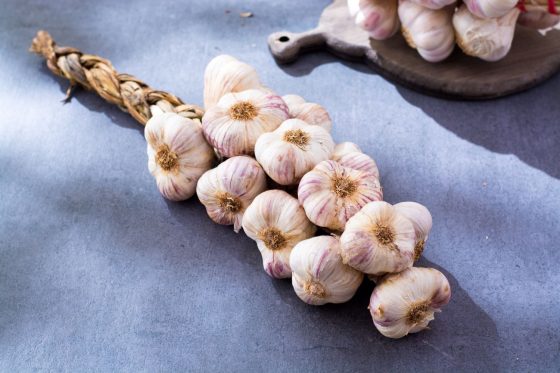Garlic: flowers, care & benefits
Not only is garlic a key kitchen ingredient, but it can be good for you as well. Discover more about this allium and the health benefits of garlic.

Although widely available in shops and supermarkets, you can also grow garlic (Allium sativum) at home. Read on to find out how to care for garlic, what common pests and diseases affect garlic as well as why garlic is good for you.
Contents
Garlic: origin, properties and flowering
Cultivated for thousands of years, garlic originates from parts of Asia and is a member of the allium family. Grown from individual cloves, garlic produces bulbs under the soil, which are covered in a papery skin. Above the ground, garlic develops tall and round green stems, from which its sword-like foliage and flowers emerge. Interestingly, all parts of a garlic plant are edible. Garlic varieties fall into two groups, hardneck, which produce larger cloves with an intense flavour and softneck, which develop more numerous but smaller cloves and can be stored for longer. Depending on the cultivar, the plants can develop garlic flowers on tall stems or scapes that can grow to around 1m tall. The tiny garlic flowers are either white or pink, develop in round clusters and are also edible.

Plant care: watering, fertilising and co.
As a low-maintenance crop, garlic requires relatively little ongoing care. However, here are some tips on caring for garlic to encourage a good yield come harvest time:
Garlic has good drought and heat tolerance. Nevertheless, for an impressive garlic harvest, you can water your garlic in the spring and summer when the weather is dry to encourage the cloves and bulbs to swell. Once the foliage begins to wilt, you can stop watering to help prevent the bulbs from rotting before picking.
Garlic prefers to be grown in a free-draining, yet fertile soil. To help garlic thrive, you can enrich the soil with organic matter and apply a high-potassium fertiliser before or at the time of planting. Our Plantura Tomato Food is ideal for fertilising garlic, as it is potassium rich and being slow release, it will feed the garlic for up to 3 months.
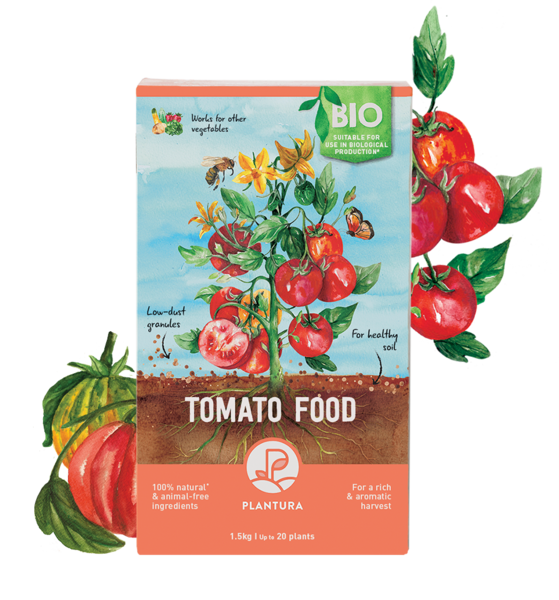
- Perfect for tomatoes, chillies, courgettes, cucumber & more
- For healthy plants & an abundant tomato harvest
- Long-lasting fertiliser that is free from animal products - child & pet friendly
For healthy plants and impressive yields, garlic requires a sunny location. To prevent the garlic from being overshadowed, keep the growing site clear of weeds. Removing any weeds will also reduce any competition for the soil’s nutrients and help lower the risk of disease.
During the summer months, hardneck varieties produce flowers as they mature, whereas softneck garlic tends to only flower when grown in stressful conditions. Whichever garlic variety you grow, you can remove the garlic flowers as soon as they appear to help channel the plant’s energy back into the bulb.

Tip: growing garlic as a companion plant can help protect other crops from pests and disease.
Common pests and diseases
In general, garlic tends to grow trouble-free. However, garlic can succumb to pests and diseases that affect other alliums such as onions (Allium cepa) and leeks (Allium porrum):
- Allium leaf miner (Phytomyza gymnostoma): the white or yellow larvae of the Allium leaf miner burrow through all parts of the plant, leading to the rotting of the damaged tissue. Allium leaf miner can also be identified by the brown pupae on the bulbs or stems. You can prevent allium leaf miner on garlic by covering plants with fleece or fine mesh.
- Leek rust (Puccinia porri): a fungal garlic disease, leek rust symptoms include orange spots and lines that develop on both sides of the garlic leaves and wilting. If you spot leek rust, remove the affected leaves and dispose of them carefully but not in the compost, as this can lead to contamination. Following a crop rotation and planting garlic at the correct spacing can help prevent rust from forming and spreading between garlic plants.
- Onion white rot (Stromatinia cepivora): is a soil-borne fungal disease that can cause the foliage to wilt and garlic bulbs to rot. With no chemical controls available to the home gardener, prevention is key. White rot can be prevented by practising a crop rotation, avoiding any soil cross-contamination, and growing different allium species away from each other. Planting healthy garlic sets from a reputable supplier can also help prevent onion white rot in garlic.

Are garlic plants winter hardy?
If you are wondering if garlic plants are hardy, the answer is most definitely. Most garlic varieties are rated H4 for hardiness, which indicates that they can withstand temperatures as low as -5 to -10 °C. Furthermore, garlic can even benefit from cold winter periods, as this encourages the bulbs to form.
How to propagate garlic?
Instead of buying garlic sets, you can also grow garlic from collected seed, also known as bulbils. To propagate garlic from the bulbils, let the garlic flower and once dry, collect the tiny bulbils. In early autumn, sow the bulbils 15cm apart and at a depth of 2cm and keep the soil moist. Growing garlic from seed takes a great deal of patience and around 2 years to produce a harvest, which is why garlic is most often grown from sets.

Is garlic poisonous to cats?
Along with onions, garlic and cats do not mix well, as it is toxic to them and can lead to poisoning. So much so that cats should not consume any garlic or even any foods that have been cooked with it.
Garlic benefits: is it good for you?
Not only is garlic an important flavour in many recipes and dishes, but garlic is also good for you. You can eat garlic either raw or cooked. However, when cooking garlic, it is important to not allow it to burn because it becomes bitter.
Used for millennia as a preventative and treatment for various ailments, garlic was also taken as a remedy during epidemics. Garlic contains a myriad of goodness, most notably the organosulphur compound allicin, vitamins C and K, magnesium, potassium and zinc. Furthermore, garlic is said to have antifungal, anti-viral and anti-inflammatory properties, which is why it is often taken as a remedy against skin infections, coughs and colds and to subdue inflammation.
When it comes to how much garlic is beneficial or healthy, there is no official guidance. However, research shows that consuming around 1 to 2 cloves or 3 to 6 grams per day is beneficial to your health. That being said, if you experience any side effects such as any digestive or gastroesophageal effects, consumption should be reduced.

Although commonly grown in the ground, you can also grow garlic in a container. Learn more about growing garlic in pots in our dedicated article.
